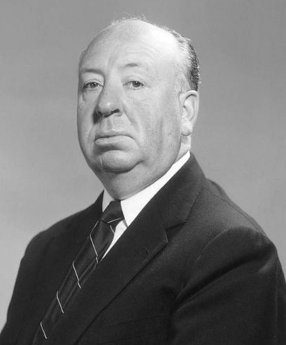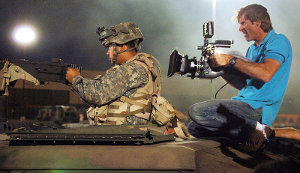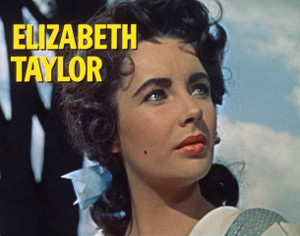Motion picture industry and insurance
 Alfred Hitchcock Alfred Hitchcock |
In view of these huge sums invested, any problem arising during the lengthy and complex movie-making process may turn into disaster.
During film shooting, anything can happen, from the more tragic events of death of an actor or a technical officer to the unlikely happening such as the termination or abandonment of the project. For insurers, motion picture production falls within the category of special risks.
It is, especially the numerous logistic, human and time constraints which often require the services of specialized insurers. The non-availability of a setting or of an individual may generate average costs from 92 000 USD to 110 000 USD for a feature film.
Insuring a movie: how does it work?
Insuring a movie means covering almost every aspect pertaining to the movie: setting, actors, stunts, furniture, shooting gear, film base, etc. It is indeed quite a complex process due to the numerous technical and human parameters that make up a film. Generally, it is the film-producing firm which is entrusted with this task by making recourse to a specialized insurance broker.
 When a film enters the preparation stage, the producer sends the scenario to the broker or directly to the insurer. A thorough reading is carried out and followed by a meticulous analysis of the shooting planning.
When a film enters the preparation stage, the producer sends the scenario to the broker or directly to the insurer. A thorough reading is carried out and followed by a meticulous analysis of the shooting planning.
The scenes requiring specific insurance needs are going to catch the attention of specialists right away: special effects, stunts, helicopter shot. Once the analysis has been achieved and the scenario scrutinized, numeric appraisal takes place.
Later, all key individuals featuring in the film are submitted to a meticulous medical check-up. It is lead and supporting actors who are targeted by this procedure. Sometimes, other less visible characters in the film (the film director, technical crew) undergo also this check-up. In the event of an elderly film director for instance, insurers require a replacement director.
A key-man insurance is underwritten, if production deems that one or several persons are indispensible for the film making. When a health problem is spotted, the insurer may:
- either accept the risk after payment of an additional premium,
- or refuse to cover “key-man”. Production in that case will be compelled to make recourse to another insurer such as Lloyd’s for instance, for an insurance supplement.
To cover against all hazards, production firms generally underwrite a property insurance for setting, accessories, shooting gear. Once the shooting is finished, other policies come to play such as:
- "film base cover" to protect film negatives and any digital base during editing,
- the guarantees covering copy rights, musical loans,
- specific covers for the stages of distribution and promotion.
Many brokerage firms have specialized in this market niche proposing tailored solutions. They are Continental Media Assurance, Riskmedia International, Gras Savoye, Diot Bellan and Marsh. As far as insurers are concerned, QBE Insurance (Australia) and Gerling (Germany) are the undisputed leaders of the film-making industry.
Continental Media Assurances: A broker specialized in the audiovisual sector
Being on the scene for over 30 years, Continental Media Assurances has covered nearly 8 000 productions throughout the world for sums comprised between 10 000 and 210 million USD. Continental Media Assurances has developed an international network and is mainly active in Europe and North America.
Motion picture industry and insurance: Guarantees proposed by insurers
The guarantees underwritten often cover third part liability, financial loss, damage affecting property and equipment as well as the proper execution of work.
Third party liability
This guarantee covers damage caused to third party resulting from staff hired by the insured or from equipment used during the shooting. This policy which is underwritten since the beginning of the film preparation expires upon completion of post-production work. Production of an insurance certificate is often required for the delivery of most shooting permits.
Financial loss
Financial loss cover enables the production company to face the additional charges incurred for film completion. In case of total abandonment of the project, this loss corresponds to the expenses incurred by the insurer from the beginning of the project until final stoppage of production.
Two types of guarantees are proposed by insurers:
The production guarantee
It is designed to indemnify the additional fees resulting from adjournment, interruption or abandonment of the production of the movie. It comprises three levels:
- the pre-preliminary production guarantee covers the financial losses triggered by the abandonment of the project because of non-availability of key-men (illness),
- the preliminary production guarantee includes the risks covered by the pre-preliminary production guarantee along with damages caused by floods, fire, loss or deterioration of property or of setting indispensible for film making,
- the "production" guarantee covers the afore-mentioned risks and extends to the entire duration of shooting.
The negative guarantee
The production firm may also underwrite a negative policy. This insurance is designed to indemnify the insured in the event of deterioration, total or partial loss of the film bases utilized in film shooting, during transportation or processing at the laboratory. The cost pertaining to the reshooting of a scene whose reel has been damaged is to the charge of the insurer.
This cover rules out the use of faulty equipment and mishandling, development and editing errors.
Damage to property
This guarantee covers material damages occurring during shooting, transportation or storage. It applies to damages affecting buildings, setting, office equipments, … which trigger delays in the production planning.
Three types of guarantees are provided:
- the "furniture, setting, costume" cover, in the event of damages affecting shooting during transfer or storage,
- the "built up setting" cover, in the event of partial or total destruction of the setting,
- the "material comprehensive risk" cover.
The proper execution cover
 Delays, therefore, over budgeting, are producers’ worst nightmare. The proper execution guarantee means movie financiers are reassured.
Delays, therefore, over budgeting, are producers’ worst nightmare. The proper execution guarantee means movie financiers are reassured.
Upon underwriting of the cover, the producer commits to ensure that the movie will be completed at a given date for a given sum. He may have recourse to a proper completion guarantor, who, being present on shooting stage, is entrusted with the task of resolving the problems that could cause delays.
Very much in use in Anglo-Saxon countries, this system, whose premiums near 2.5% of the movie budget, is mainly designed for international co-productions.
Other risks
Production firms may underwrite other guarantees such as those pertaining to climate conditions, transportation of funds, individual errors or oversight, personal accident and motor insurance.
Film budgeting: the case of "Thelma, Louise and Chantal"
Released in 2010, the French film “Thelma, Louise and Chantal” cost 4 506 438 USD. Its budget breaks down as follows:
| Category | Expenses in USD | Expenses in % of the total budget |
|---|---|---|
Artistic rights: (copyrights, subject, dialogue adaptation, …) | 191 806 | 4.25% |
Staff (Technical crew salaries) | 958 584 | 21.3% |
Characterization (actors’ salaries) | 710 022 | 15.75% |
Payroll taxes for actors and technical crew, benefits | 726 094 | 16.15% |
Setting and dress | 230 721 | 5.15% |
Transportation, defrayments, control room | 363 426 | 8% |
Technical facilities: all gear rented or purchased during shooting: cameras, stage machinery, lighting design, sound | 389 202 | 8.65% |
Film and laboratories | 333 747 | 7.4% |
Insurance and various financial charges | 182 321 | 4% |
Overhead expenses and contingency | 420 515 | 9.35% |
Total | 4 506 438 | 100% |
Examples of incidents occurring during shooting
The Exorcist, a cursed shooting (1973)
Nine is the number of those who perished during the shooting of “The Exorcist”. A cursed film with successive incidents. Moreover, Ellen Burstyn, the main actress of the film, suffered a back injury after falling down while a fire delayed shooting for six weeks, …
The Crow, over budgeting (1994)
The shooting of “The Crow” was maked by a tragic incident. The actor Brandon Lee, son of Bruce Lee, was killed on stage by a real bullet. This terrible accident, alone, cost 15 million USD, the film’s over budgeting amounted to 23 million USD.
Transformers 2, production delay (2009)
Despite the 200 million USD of budget that were disbursed to ensure a smooth film shooting, trouble struck as Shia Labeouf, the movie’s main actor, sustained a series of problems starting with a car crash followed by an injury during shooting, which caused long delays to production.
Bollywood, the world’s biggest movie-making industry
Each year, more than 4 billion tickets were sold in India versus 3 billion for Hollywood movies throughout the world. In 2011 Bollywood-made movies generated more than 4 billion USD. This giant market, however, has only one insurance company offering specific covers for Indian movie productions: United India Insurance.